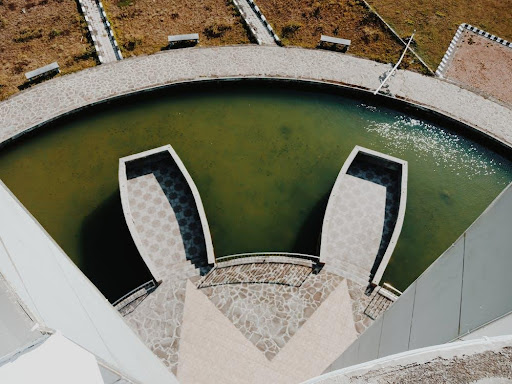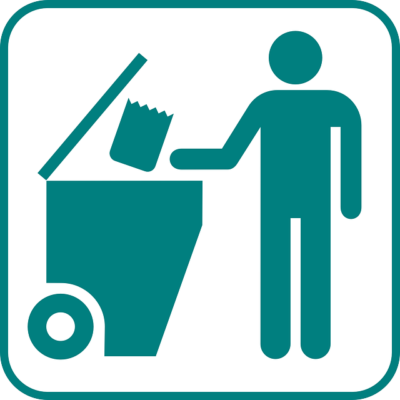Water contamination is a critical environmental and public health issue that affects millions of people worldwide. It occurs when harmful substances like chemicals, bacteria, and other pollutants enter water sources, making them unsafe for consumption and use. Understanding the various aspects of water contamination is essential, as it can have far-reaching impacts on health, ecosystems, and economies. This guide explores key things everyone should know about water contamination: its causes, common contaminants, health risks, and preventive measures. Awareness and knowledge are the first steps towards addressing and mitigating the effects of water contamination, ensuring access to safe, clean water for current and future generations.
1. Common Sources of Water Contamination
Water contamination can arise from various sources, making it a widespread issue. Industrial activities are a major contributor, as factories often discharge pollutants like heavy metals and toxic chemicals into water bodies. Agricultural runoff is another significant source, where pesticides and fertilizers used in farming seep into groundwater and nearby streams. Urban runoff, including oil, grease, and other pollutants from roads and buildings, also plays a role. Natural sources, such as heavy metals leaching from rocks and soil, can contaminate water as well. Additionally, improper disposal of household chemicals and pharmaceuticals contributes to the problem. Identifying and managing these sources is crucial in preventing water contamination and protecting public health and the environment.
2. Health Risks of Water Contamination
Drinking or using contaminated water poses significant health risks. Exposure to pollutants like heavy metals, nitrates, and industrial chemicals can cause serious health issues, including cancer, developmental disorders, and organ damage. Contaminated water can also carry harmful bacteria and viruses, leading to waterborne diseases like cholera, dysentery, and hepatitis. For communities affected by severe water contamination, setting up a claims center becomes essential. These centers help address the health concerns of the population, offering information, resources, and sometimes compensation for those affected. Understanding these risks underscores the importance of ensuring access to clean, safe water and taking preventive measures to protect public health.
3. Impact on Ecosystems
Water contamination doesn’t just affect human health; it has profound consequences on ecosystems as well. When pollutants enter water bodies, they can disrupt the delicate balance of aquatic life. Chemicals like pesticides and heavy metals accumulate in the bodies of fish and other aquatic organisms, a process known as bioaccumulation. This not only affects the health of these organisms but can also impact the entire food chain, including humans who consume these species. Contaminants can also lead to decreased oxygen levels in water, causing dead zones where aquatic life cannot survive. Protecting water sources from contamination is therefore vital not just for human health, but also for maintaining biodiversity and the overall health of our planet’s ecosystems.
4. Economic Impact of Water Contamination
The economic repercussions of water contamination are extensive and multifaceted. Industries that rely on clean water, such as fishing, tourism, and agriculture, can suffer significant losses due to polluted water sources. The cost of treating waterborne diseases and the healthcare burden they impose add to the economic strain. Additionally, cleaning up contaminated water bodies is often a costly and time-consuming process, requiring substantial financial resources from both public and private sectors. Investing in proper waste management, pollution control, and water treatment facilities is crucial not only for environmental and health reasons but also for sustaining economic stability. Preventing water contamination can thus be seen as an investment in a region’s economic resilience and public health security.
5. The Challenge of Removing Contaminants
Removing contaminants from water sources presents a significant challenge, as the process can be complex and costly. The methods for decontamination depend on the type of pollutants present. For instance, biological contaminants like bacteria and viruses require disinfection through methods like chlorination or ultraviolet light treatment. Chemical pollutants, such as pesticides or heavy metals, often need more sophisticated treatments like reverse osmosis, ion exchange, or activated carbon filtration. Moreover, treating large bodies of water like lakes or rivers can be especially challenging due to their size and the continuous introduction of new pollutants. The complexity of these processes highlights the importance of preventing contamination in the first place and investing in advanced water treatment technologies.
6. Preventive Measures and Regulations
Preventing water contamination is crucial and involves a combination of regulatory measures and proactive practices. Governments play a key role by enacting and enforcing environmental regulations that limit the discharge of pollutants into water bodies. These regulations often require industries and agricultural operations to treat wastewater before release. Additionally, educating the public about the importance of not disposing of hazardous materials like paints, oils, and medications into the water supply is vital. At the community level, implementing green infrastructure, such as rain gardens and permeable pavements, helps reduce urban runoff. On an individual level, using environmentally friendly products and being conscious of water usage can contribute significantly to reducing potential contaminants. Proactive prevention is the most effective way to protect our water resources and ensure their safety for future generations.
7. The Role of Community Awareness and Action
Community awareness and action play a pivotal role in combating water contamination. Educated and engaged communities are better equipped to advocate for cleaner water and hold polluters accountable. Local initiatives, such as organizing clean-up drives, monitoring water quality, and participating in environmental advocacy, can make a significant difference. Communities can also influence policy change by voicing concerns to local authorities and supporting sustainable practices. Individual actions, combined with collective efforts, contribute to a larger impact in protecting and preserving water sources. Raising awareness about the importance of water conservation and pollution prevention is essential for the health of both the community and the environment.
Conclusion
Water contamination is a complex issue with far-reaching implications for health, ecosystems, and economies. Understanding its sources, health risks, ecological impact, economic consequences, and the challenges of removal is essential. Preventive measures, regulatory actions, and community engagement are key to safeguarding our water resources. By collectively committing to responsible practices and advocating for environmental protection, we can effectively combat water contamination, ensuring access to clean, safe water for all and preserving this vital resource for future generations.










